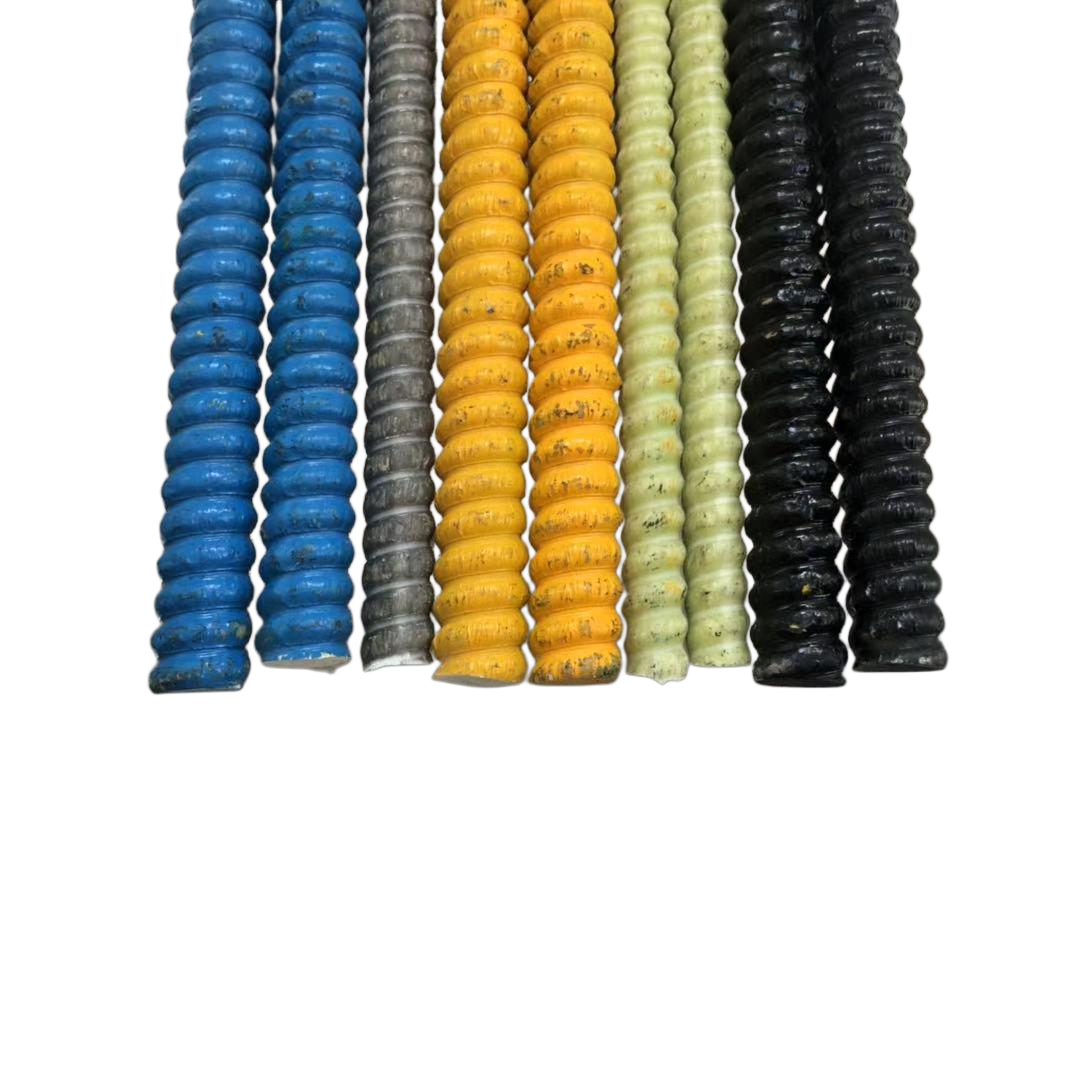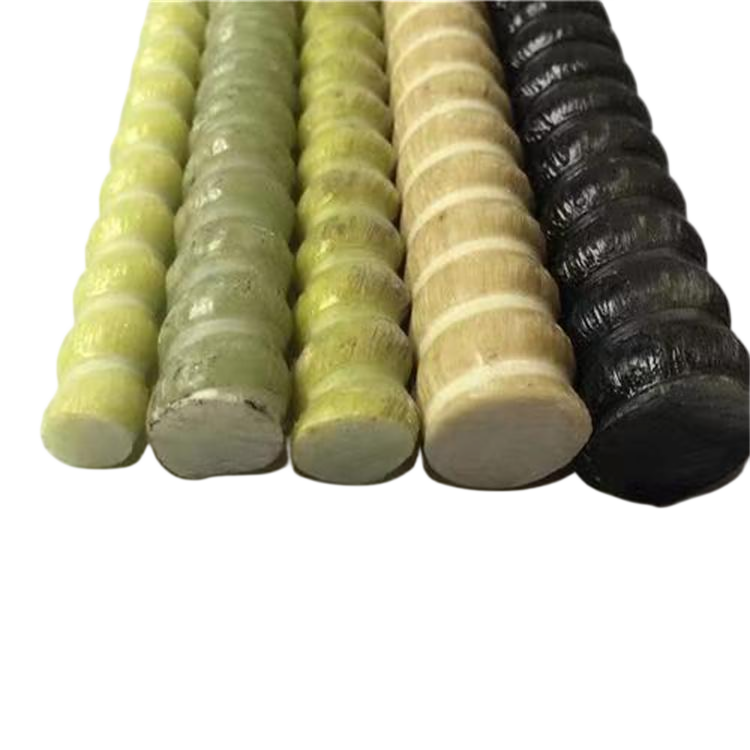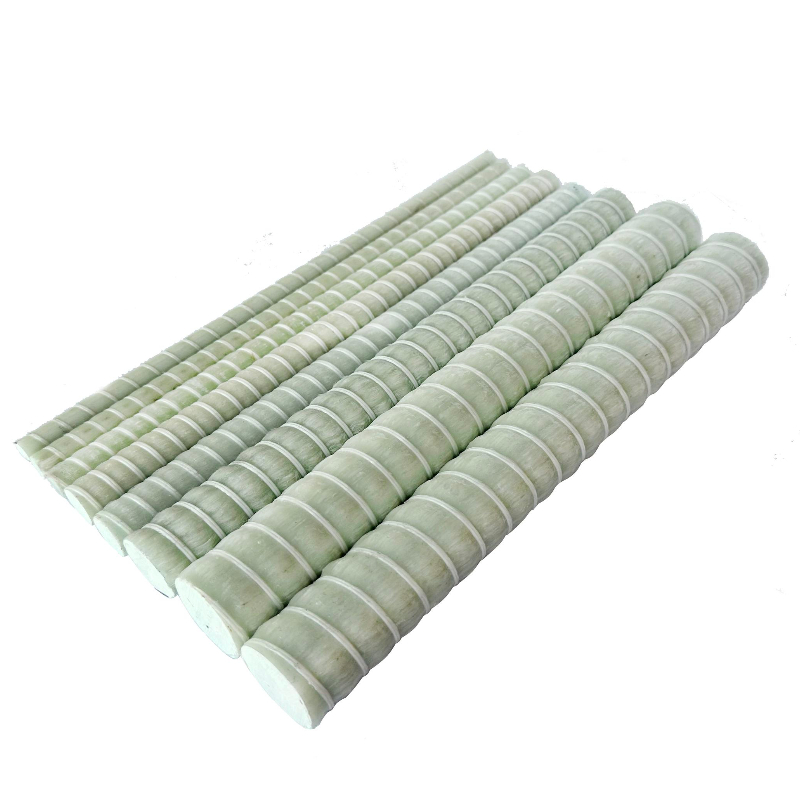Introduction
In recent years, Glass Fiber Reinforced Polymer (GFRP) bolts have emerged as a revolutionary alternative to traditional steel bolts in various engineering applications. Their exceptional properties, such as high tensile strength, corrosion resistance, lightweight nature, and electromagnetic neutrality, make them highly suitable for use in harsh environments and specialized industries. As the demand for GFRP Bolt solutions increases, ensuring the quality and reliability of these components becomes paramount. This comprehensive analysis delves into the critical aspects of quality control and testing methodologies for GFRP bolts, highlighting their significance in maintaining structural integrity and safety across various applications.
The engineering community recognizes that the success of structures and systems utilizing GFRP bolts hinges on rigorous quality assurance protocols. By implementing standardized testing procedures and adhering to stringent quality control measures, manufacturers and engineers can guarantee that GFRP bolts meet or exceed the necessary performance criteria. This article explores the intricacies of material properties, manufacturing processes, testing methods, and the challenges faced in the quality assurance of GFRP bolts.
Material Properties and Standards
GFRP bolts are composed of high-strength glass fibers embedded within a polymer resin matrix. The fibers serve as the primary load-bearing component, while the matrix binds the fibers together, transferring stress between them and protecting them from environmental damage. The synergy between the fibers and the resin matrix results in a composite material with superior mechanical properties and durability.
The performance of GFRP bolts is influenced by several factors:
- Fiber type and quality: The strength and modulus of the glass fibers directly affect the bolt's mechanical properties.
- Resin matrix: The type of resin (e.g., epoxy, vinyl ester, polyester) impacts the bolt's chemical resistance and thermal properties.
- Fiber volume fraction: The proportion of fibers within the composite determines the overall strength and stiffness.
- Fiber orientation: Aligning fibers along the bolt's axis maximizes tensile strength.
- Manufacturing process: Techniques like pultrusion affect the composite's uniformity and quality.
To ensure consistency and reliability, international standards have been established. The American Society for Testing and Materials (ASTM) provides guidelines such as ASTM D7957 for specifying GFRP bars and bolts used in structural applications. These standards define requirements for:
- Tensile strength and modulus of elasticity
- Shear strength
- Bond strength with concrete or other substrates
- Creep and relaxation behavior
- Durability under environmental exposures
Compliance with these standards is crucial for acceptance in engineering designs and for ensuring that the GFRP Bolt performs as expected throughout its service life.
Manufacturing Processes and Quality Control
The manufacturing process of GFRP bolts plays a pivotal role in determining their quality and performance. Pultrusion is the most common method used, involving pulling continuous strands of glass fibers through a resin bath and then through a heated die to cure and form the bolt shape. Key aspects of quality control during manufacturing include:
Raw Material Inspection
Prior to production, thorough inspection of raw materials ensures that fibers and resins meet quality specifications. Glass fibers must exhibit high tensile strength and be free from surface defects or impurities that could initiate failure. Resins should possess appropriate viscosity, curing characteristics, and compatibility with the fibers.
Advanced analytical techniques, such as Fourier-transform infrared spectroscopy (FTIR) and differential scanning calorimetry (DSC), can assess the chemical composition and thermal properties of the resin. Fiber quality can be evaluated through microscopic examination and tensile testing of fiber bundles.
Process Monitoring and Control
Maintaining consistent process parameters is essential for producing uniform GFRP bolts. Key parameters include:
- Fiber tension: Uniform tension prevents fiber waviness and ensures straight alignment.
- Resin impregnation: Proper wetting of fibers is critical for interfacing and stress transfer.
- Die temperature: Controlled heating ensures adequate curing without thermal degradation.
- Pultrusion speed: Consistent pulling speed prevents defects and maintains dimensional accuracy.
Implementing real-time monitoring systems, such as automated sensors and feedback controls, allows for immediate adjustments to process variations, thereby reducing defects and improving product quality.
Dimensional Verification
Post-production, the physical dimensions of GFRP bolts must be verified against design specifications. Using precision measurement tools, manufacturers check parameters such as:
- Diameter and cross-sectional area
- Length and straightness
- Thread dimensions and pitch accuracy
- Surface finish and uniformity
Adherence to dimensional tolerances ensures compatibility with installation hardware and facilitates proper load transfer in service.
Mechanical Testing and Performance Evaluation
Mechanical testing provides quantitative data on the strength and behavior of GFRP bolts under various loading conditions. Key tests include:
Tensile Strength Testing
Conducted according to ASTM D638 or similar standards, tensile tests involve applying axial loads to a bolt specimen until failure. Parameters measured include:
- Ultimate tensile strength (UTS)
- Modulus of elasticity (E)
- Elongation at break
- Stress-strain behavior
This data helps engineers predict the bolt's performance under tensile loads and design appropriate safety factors.
Shear Strength Testing
Shear tests assess the material's ability to resist forces that cause sliding failure along a plane parallel to the force direction. ASTM D4475 outlines the procedures for interlaminar shear strength testing of composites. Key outcomes include:
- Maximum shear stress
- Shear modulus
- Failure modes and mechanisms
Understanding shear properties is vital for applications where bolts experience transverse loads or are embedded in materials with different stiffnesses.
Bond Strength Testing
Bond strength between the GFRP bolt and surrounding substrate is critical for load transfer. Pull-out tests, as per ASTM D7913, involve embedding the bolt in a material (e.g., concrete) and applying a tensile force until extraction. Factors evaluated include:
- Maximum pull-out force
- Bond stress distribution
- Failure modes (adhesive, cohesive, or substrate failure)
Results inform the design of anchorage lengths and help optimize surface treatments to enhance bonding.
Creep and Relaxation Testing
Long-term loading can cause time-dependent deformation (creep) or stress reduction (relaxation) in GFRP bolts. Testing involves subjecting specimens to sustained loads or strains over extended periods. Key observations include:
- Creep strain rates
- Creep rupture time
- Stress relaxation profiles
These insights are crucial for structures where GFRP bolts are expected to maintain performance over decades.
Environmental Durability Testing
GFRP bolts often operate in challenging environments that can deteriorate composite materials. Environmental durability tests evaluate how factors like moisture, temperature, chemicals, and ultraviolet (UV) radiation affect bolt performance.
Accelerated Aging Tests
To predict long-term behavior, accelerated aging exposes bolts to elevated stressors for shorter durations. Common procedures involve:
- Immersion in solutions (e.g., saltwater, acids, alkalis)
- Thermal cycling between high and low temperatures
- UV exposure using artificial light sources
Post-aging mechanical tests determine property retention, and results guide material selection and protective measures.
Alkaline Resistance Testing
Concrete's high pH environment can affect GFRP bolts. Accelerated aging in alkaline solutions simulates prolonged exposure. Performance metrics include:
- Residual tensile and shear strength
- Microstructural changes observed via scanning electron microscopy (SEM)
- Chemical degradation assessed through spectroscopy
Data from these tests ensure that GFRP bolts maintain integrity when used in concrete structures.
Non-Destructive Testing Methods
Non-destructive testing (NDT) is vital for in-process quality control and assessing in-service components without causing damage. Techniques include:
Ultrasonic Testing
High-frequency sound waves detect internal features. Ultrasonic testing can identify:
- Delaminations between fiber layers
- Voids or porosity within the resin matrix
- Cracks or fiber breakage
Advanced ultrasonic techniques, such as phased array and time-of-flight diffraction (TOFD), enhance defect detection capabilities.
Infrared Thermography
This method captures thermal images to identify anomalies. Variations in heat flow can reveal:
- Subsurface defects affecting thermal conductivity
- Regions of differing material composition
- Moisture ingress within the bolt
Infrared thermography is beneficial for large-scale inspections where rapid assessment is required.
Acoustic Emission Testing
By listening to the sounds emitted from a material under stress, this technique detects the initiation and growth of defects. Benefits include:
- Real-time monitoring during loading
- Early detection of damages before catastrophic failure
- Ability to locate defect sources through sensor arrays
Acoustic emission testing enhances safety by providing warnings of potential failures.
Case Studies and Applications
The practical application of GFRP bolts in real-world projects underscores the importance of comprehensive quality control and testing. Notable case studies include:
Mining Industry Application
A large-scale mining operation faced challenges with corrosion of steel bolts causing frequent replacements and safety concerns. Implementing GFRP Bolt systems offered a solution due to their corrosion resistance and high strength-to-weight ratio.
Extensive testing included:
- Tensile and shear strength verification under simulated loading conditions
- Environmental durability assessments in acidic mine water
- Non-destructive inspections during in-situ trials
The successful deployment resulted in enhanced safety, reduced maintenance costs, and longer service life of support systems.
Civil Engineering Structures
In a coastal city, a bridge rehabilitation project involved replacing corroded steel reinforcement. GFRP bolts and rebars were chosen for their resistance to chloride-induced corrosion from marine environments.
Quality assurance measures included:
- Compliance with ASTM and ACI (American Concrete Institute) standards
- Long-term exposure tests in simulated seawater
- Monitoring structural health using embedded sensors
The outcome demonstrated increased longevity of the structure and validated the effectiveness of GFRP components in aggressive environments.
Challenges and Considerations
Despite the advantages, several challenges must be addressed to optimize the use of GFRP bolts:
Standardization of Testing Methods
Global acceptance requires harmonization of standards across regions. Discrepancies between ASTM, ISO, and other national standards can lead to confusion and hinder international projects. Collaborative efforts are needed to develop unified guidelines that facilitate cross-border applications of GFRP technology.
Long-Term Performance Data
Limited historical data on GFRP bolts necessitates conservative design approaches. Establishing databases from long-term monitoring of existing installations will provide valuable insights into degradation mechanisms, service life predictions, and maintenance strategies.
Cost Considerations
While GFRP bolts offer lifecycle cost benefits due to reduced maintenance, the initial material costs are higher than traditional steel bolts. Educating stakeholders on the total cost of ownership and the long-term advantages is essential for wider adoption.
Conclusion
The quality control and testing of GFRP bolts are integral to their successful integration into modern engineering practices. By focusing on meticulous manufacturing processes, rigorous mechanical and environmental testing, and overcoming challenges related to standardization and long-term data, the industry can fully leverage the benefits of GFRP technology.
The continued collaboration among manufacturers, researchers, and engineers will drive innovation and foster the development of improved testing methodologies and standards. As confidence in the performance and reliability of GFRP Bolt solutions grows, their application will expand, leading to safer, more durable, and cost-effective structures capable of meeting the demands of challenging environments.
Ultimately, the proactive approach to quality assurance in GFRP bolt production and testing ensures that these advanced materials fulfill their potential, contributing significantly to the advancement of sustainable and resilient infrastructure worldwide.



























